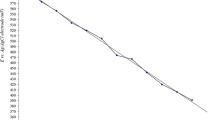Abstract
The aim of the study was to evaluate the amount of fluoride remaining in the oral cavity of children after brushing with fluoride gel (1.25% F). The study involved six groups of 7-year-old and six groups of 11-year-old children. The procedure was carried out according to the manufacturer’s recommendations. Fluoride concentrations were determined using ion-selective fluoride electrode. No statistically significant difference was found between the amount of fluorides that remained in the oral cavity of younger and older age group (1.2 and 1.3 mg, respectively; p > 0.05). The amount of fluorides swallowed during the procedure in both age groups proves to be within acceptable limit, as far as risk of acute poisoning symptoms is concerned. The individual daily fluoride exposure during the day of procedure seems to be twice as high compared to average fluoride intake from diet and dentifrice, and it does not exceed Tolerable Upper Intake Level for children more than 8. In younger children, it seems justifiable to reduce the amount of the preparation applied on a toothbrush, especially when daily use of the gel is recommended.
Similar content being viewed by others
References
Centers for Disease Control and Prevention (2001) Recommendations for using fluoride to prevent and control dental caries in the United States. MMWR 50:1–42
World Health Organization (1994) Fluorides and oral health: report of a WHO expert committee on oral health status and fluoride use. WHO, Geneva
Fomon SJ, Ekstrand J, Ziegler EE (2000) Fluoride intake and prevalence of dental fluorosis: trends in fluoride intake with special attention to infants. J Public Health Dent 60:131–139
Warren JJ, Levy SM (1999) A review of fluoride dentifrice related to dental fluorosis. Pediatr Dent 21:266–272
Larsen MJ, Kirkegard E, Fejerskov O, Poulsen S (1985) Prevalence of dental fluorosis after fluoride-gel treatments in a low-fluoride area. J Dent Res 64:1076–1079
LeCompte EJ (1987) Clinical application of topical fluoride products—risks, benefits, and recommendations. J Dent Res 66:1066–1071
Villa A, Anabalon M, Cabezas L (2000) The fractional urinary fluoride excretion in young children under stable fluoride intake conditions. Community Dent Oral Epidemiol 28:344–355
Ekstrand J (1980) Systemic fluoride absorption following fluoride gel application. J Dent Res 59:1067
Heath K, Singh V, Logan R, McIntyre J (2001) Analysis of fluoride levels retained intraorally or ingested following routine clinical applications of topical fluoride products. Aust Dent J 46:24–31
Newbrun E (1987) Topical fluoride therapy: discussion of some aspects of toxicology, safety, and efficacy. J Dent Res 66:1084–1086
Eichmiller CF, Eidelman N, Carey CM (2005) Controlling the fluoride dosage in a patient with compromised salivary function. J Am Dent Assoc 136:67–70
Akiniwa K (1997) Re-examination of acute toxicity of fluoride. Fluoride 30:89–104
Pessan JP, DaSilva SMB, Buzalaf MAR (2003) Evaluation of the total fluoride intake of 4–7-year-old children from diet and dentifrice. J Appl Oral Sci 11:150–156
Ekstrand J, Koch G, Lindgren LE, Petersson LG (1981) Pharmacokinetics of fluoride gels in children and adults. Caries Res 15:213–220
Wei SH, Chik FF (1990) Fluoride retention following topical fluoride foam and gel application. Pediatr Dent 12:368–374
LeCompte EJ, Doyle TE (1982) Oral fluoride retention following various topical application techniques in children. J Dent Res 61:1397–1400
LeCompte EJ, Rubenstein LK (1984) Oral fluoride retention with thixotropic and APF gels and foam-lined and unlined trays. J Dent Res 63:69–70
Marinho VCC, Higgins JPT, Logan S, Sheiham A (2003) Systematic review of controlled trials on the effectiveness of fluoride gels for the prevention of dental caries in children. J Dent Educ 67:448–458
Marthaler TM, Steiner M, Menghini G, De Crousaz P (1995) Urinary fluoride excretion in children with low fluoride intake or consuming fluoridated salt. Caries Res 29:26–34
Ran F, Gedalia I, Fried M, Hadani P, Tved A (1991) Effectiveness of fortnightly tooth brushing with amine fluorides in caries-prone subjects. J Oral Rehabil 18:311–316
Alexander SA, Ripa LW (2000) Effects of self-applied topical fluoride preparations in orthodontic patients. Angle Orthod 70:424–430
Whitford GM, Thomas JE, Adair SM (1999) Fluoride in whole saliva, parotid ductal saliva and plasma in children. Arch Oral Biol 44:785–788
Institute of Medicine (1997) Dietary reference intakes for calcium, phosphorus, magnesium, vitamin D, and fluoride. National Academy, Washington, DC, pp 288–313
Haftenberger M, Viergutz G, Neumeister V, Hetzer G (2001) Total fluoride intake and urinary excretion in German children aged 3–6 years. Caries Res 35:451–457
Author information
Authors and Affiliations
Corresponding author
Rights and permissions
About this article
Cite this article
Borysewicz-Lewicka, M., Opydo-Szymaczek, J. & Opydo, J. Fluoride Ingestion After Brushing with a Gel Containing a High Concentration of Fluoride. Biol Trace Elem Res 120, 114–120 (2007). https://doi.org/10.1007/s12011-007-0060-6
Received:
Revised:
Accepted:
Published:
Issue Date:
DOI: https://doi.org/10.1007/s12011-007-0060-6




